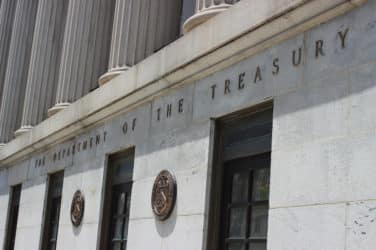The World Economic Forum has raised the sensitive question of exactly whose oxen will be gored when implementing distributed-ledger technology in its latest white paper, The Future of Financial Infrastructure.
The authors of the 130-page paper have taken the blockchain conversation from ‘if’ to ‘when’, noting that 80% of the banks surveyed expect to have started a DLT project by 2017. They also noted that inventors filed for more than 2,500 DLT-related patents and DLT-related businesses have received more than $1.4 billion in investments over the past three years.
The white paper presented nine uses cases where applying DLT could dramatically reduce costs and processing times in global payments, property and casualty claims, syndicated loans, trade finance, contingent convertible bonds, proxy voting, asset rehypothecation, and equity post-trade transactions as well as automated additional compliance functions.
Each case study, and other highly potential use cases, tended to include a shared repository, multiple writers who contribute to that repository, minimal trust between the contributors, the existence of one or more intermediaries that enforce trust between participants, and the existence of dependencies between contributors’ transactions, according to the authors.
However, they questioned whether savings derived from implementing DLT-based automation would meet or exceed the value of ‘float’ revenue earned by those who hold assets during settlement.
The authors also wondered about the settlement implications of running real-time settlement processes versus current multi-day settlement cycles, such as T+2 and T+3.
Despite not answering either question, they view blockchain adoption as inevitable.
Driving the research are the opportunities for financial infrastructure operators to reduce costs by disintermediating central authorities through the use of smart contracts, which would eliminate their fees, as well as inmproving the operators’ operational effeciencies, according to the authors.
“Applications of DLT with equity post-trade are currently being explored at the proof-of-concept level with a number of incumbents and FinTechs focusing on private-equity trading as well as clearing and settlement solutions,” they wrote.
More on Blockchain:
- Machine Readable Data Could Boost RegTech
- A Smart Contract with the Devil (by Adam Krellenstein and Pinku Surana, Symbiont)
- Writing a Smarter Contract






